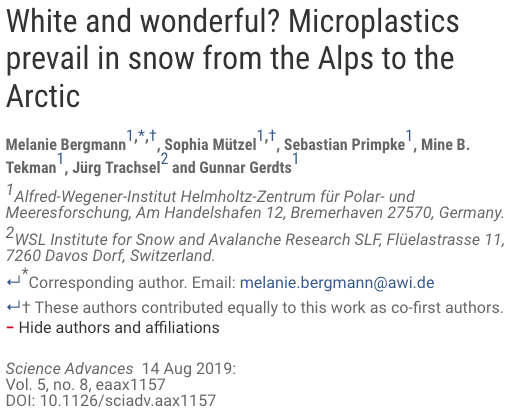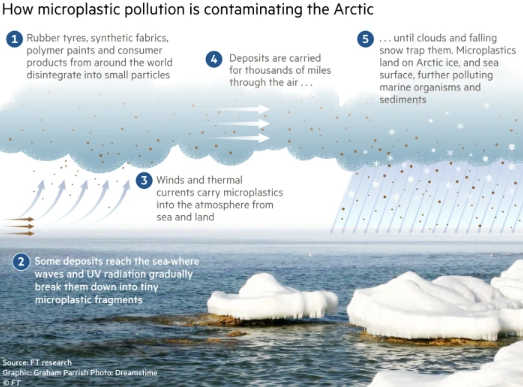Plastic Apocalypse: Dangerous Microplastics Invade Alps To Artic, Found In Fresh Snow
A new study has revealed that high levels of microplastics have been detected in some of the most remote regions of the world.
The discovery, published in the journal Science Advances, is the first international study on microplastics in snow, conducted by the Alfred Wegener Institute in Germany.

Melanie Bergmann, the lead scientist, and her team of researchers found microplastics from the Alps to the Arctic contained high levels of the plastic fragment, raises questions about the environmental and health implications of potential exposure to airborne plastics.
Watch: Farmers create natural straw intend to break plastic’s back
“I was really astonished concerning the high concentrations,” said co-author Gunnar Gerdts, a marine microbiologist at the Alfred Wegener Institute.
Bergmann explains that microplastics come from industrial economies where rubber and paints are used. The tiny fragments end up in the sea, where they’re broken down by waves and ultraviolet radiation, before absorbing into the atmosphere. From there, the plastic particles are captured from the air during cloud development, can drift across the Earth via jet streams. At some point, the particles act as a nucleus around supercooled droplets can condense, and travel to Earth as snow.

“Although there is a huge surge of research into the environmental impact of plastics, there is still so much that we do not know,” said Bergmann.
Bergmann noted how the scientific community was only in its infancy of examining the process of how microplastics get sucked up into the atmosphere then scattered around the world in some form of precipitation. She said, there’s an “urgent need for research on human and animal health effects focusing on airborne microplastics.”